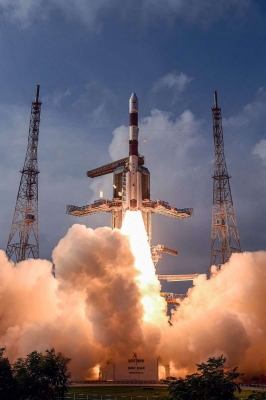
Dr. Sarabhai and his fellow scientists including Dr. APJ Abdul Kalam visited Thumba to talk with the then-Bishop of Trivandrum, who lived next to the church. They requested permission to use the church and the nearby land for scientific purposes.
With the support of the parishioners to provide the land for scientific use, the bishop agreed to their proposal. His home was quickly converted into an office; the church into a workshop and the cattle sheds into storage houses and laboratories. Even with little funding and few facilities, the enthusiastic scientists were all set to build their first rocket.
In the early stages, Thumba had no proper facilities such as canteen or vehicular transport. Jeeps were reserved for technical assistance and so moving around was either by foot or cycle.
The story of how India staged its first launch of a Nike-apache rocket supplied by NASA, is forever etched in the mind of Indians with the image of Vikram Sarabhai, APJ Kalam and fellow scientists passionately carrying the payload and rocket parts in carts and bicycles to the launch pad.
At the end of six months of hard work, on 21 November 1963, India was ready for its very first rocket launch. Along with the governor of Kerala, the district collector and the bishop, many other eminent figures in science and technology had gathered for the occasion, including Dr Homi Bhabha (the father of Indian nuclear programme) and Dr P R Pisharoty the founder-director of the Indian Institute of Tropical Meteorology.
When everything was set to go, the air was thick with tension and excitement for the launch. Just as the rocket was rolled on to the launch pad, things started going south. The hydraulic crane developed a leak and it was tackled by manually shifting it into position. The remote system of the launcher also malfunctioned. All of these were fixed and things finally seemed in order. As the alarm sounded to clear the area around the launch pad, the scientists held their breath to witness the moment they had been waiting for.
At 6.25 pm, India made history as the rocket streaked away into the dimming sky. High up in the sky, a sodium vapour cloud emerged, which looked orange in the setting Sun.
Picture Credit : Google

